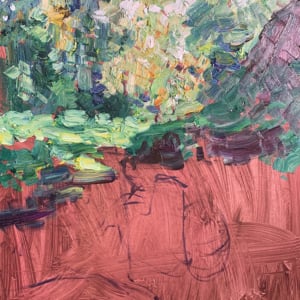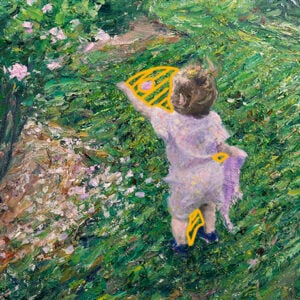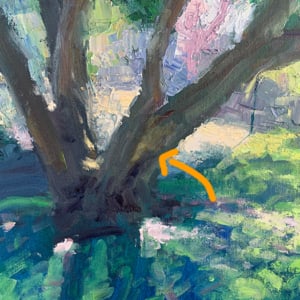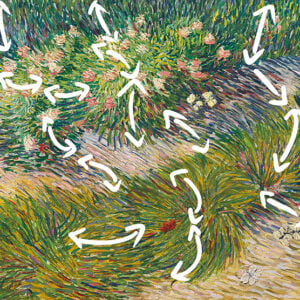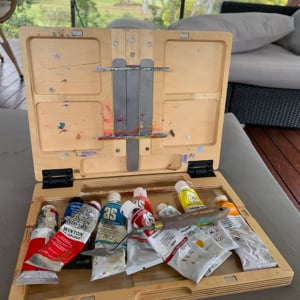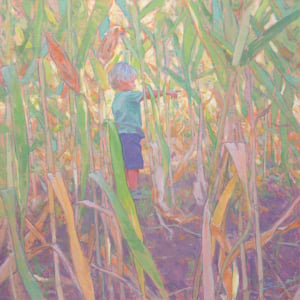Watercolor is one of the oldest and most ready-to-use mediums. Experts date its existence as far back as the Paleolithic times. However, watercolors started to be recognized as an art medium until the Renaissance and from then on have continued to be used by some of the most talented artists of all times. In this post, we mention who are twenty-one of the most talented figurative artists who took a brush, a piece of paper, water, and a soluble paint to pave their way into art history.
1. Albrecht Dürer (1471-1528)
Next to being a reputed engraver and theorist, Dürer was a pioneer of watercolor painting given he experimented with different techniques and exploited its expressive potential. Over the years, Dürer painted extremely realistic watercolors of topographic scenes, plants, landscapes, nudes, and animals, all of which respected the morphology of the selected subject to the last bit of detail. One of Dürer’s most acclaimed watercolors is Young Hare, celebrated for its impressive detail portraying every hair strand of the mammal’s fur and for the way the artist used colors to create contrast. The watercolor impressively includes the reflection of what is thought to be the artist’s studio in one of the hare’s eyes.
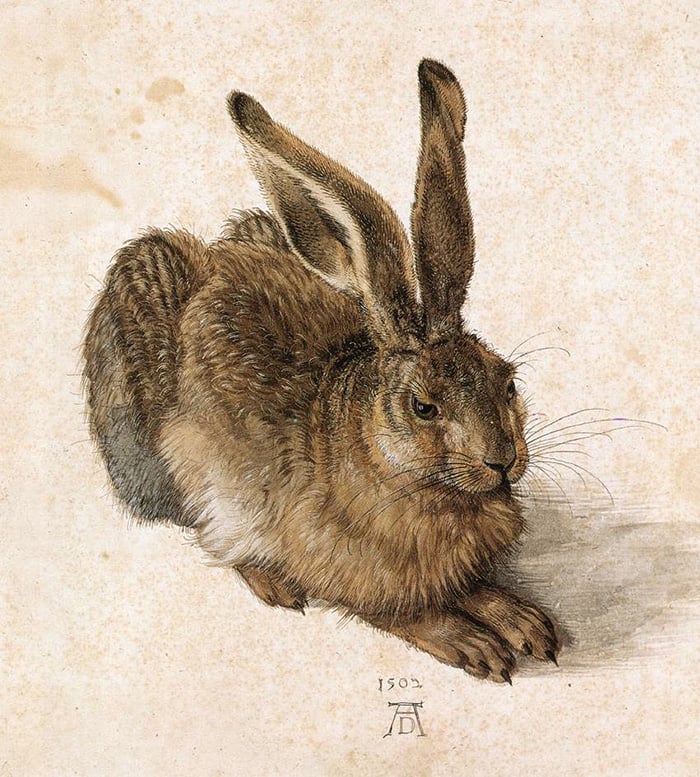
2. Adriaen van Ostade (1610-1685)
Adriaen van Ostade is viewed as one of Holland’s leading painters of peasant and low-life genre painting. Consequently, his most frequent subjects included village scenes and domestic and agricultural work. Van Ostade was an extremely prolific artist and produced more than 800 paintings, 50 etchings, and a fair number of watercolors. During his lifetime, Van Ostade’s work was popular and his watercolors, half of which were made after 1670, attempted to duplicate the effect of his oil paintings. The watercolor titled Scene in Tavern reflects the artist’s expressive style.The subjects’ features are constructed with gestural pen traces that fill the composition with movement and raw emotions.

3. William Blake (1757-1827)
Largely considered one of the greatest poets in the English language, Blake was also a consummated engraver and watercolorist. To create most of his watercolors, Blake started with a preliminary drawing in graphite or pen and ink and later on applied the layers of color. However, over time, Blake experimented with watercolors and mixed them with different mediums as a means to elevate the medium’s status. For example, he invented the technique known as “portable fresco,” described as a “wall” of gessoed or pre-primed canvas or panel painted with watercolors. Among the artist’s more interesting watercolors are the more than 100 he created to illustrate Dante’s Divine Comedy, one of which we see here depicting two demons.

4. Caspar David Friedrich (1774-1840)
Friedrich’s watercolors are entirely different from his famous allegorical landscapes as they record all the details of a particular location with a detailed style. Friedrich’s distinctive approach to watercolor painting connects to his previous experience as a landscape artist capturing views across Germany and Switzerland. The artist’s realistic style is seen, for example, in the watercolor Ruins of the Monastery Eldena, which portrays what was left of this monastery when Friedrich visited it. Notably, the dry branches located on the first plane seem to be moving with the effect of the wind and the dry tree included in the background provides the painting with a hint of the artist’s Romantic style.

5. JMW Turner (1775-1851)
Turner is one of the most important artists of the English Romantic Movement and, next to many oil paintings, he left behind more than 2000 watercolors. The artist’s watercolors capture the “spirit” of the locations he visited ranging from the English countryside to landscapes across Italy and have a rare vibrancy along with transparency effects. The latter can be seen in the watercolor titled Clare Hall and the West End of King’s College Chapel, where the expressive blurred brushstrokes present in the sky, trees, and water contrast with the detailed depiction of the bridge. Importantly, during Turner’s lifetime, his watercolors were popular and were used as the basis for engravings of English landscapes and as illustrations in various publications.

6. John Constable (1776-1837)
After 1829, world-famous artist John Constable used watercolor as his favorite medium. Skies were Constable’s most recurrent topic and he painted them with opaque pigments and vigorous traces made with thicker brushes, perhaps to convey a darker environment and to capture the atmosphere’s changes. Constable’s style is evidenced, for instance, in the work Water Street, Hampstead, where the artist created an opaque-looking landscape watercolor painting of a cloudy sky set on top of a cottage and green field. Particularly, the trees reveal his gestural traces and an experimental approach to this medium.

7. John James Audubon (1785-1851)
Audubon is widely known for the book The Birds of America, a ground-breaking series of 435 life-sized, hand-colored plates of the continent’s avifauna derived from his realistic watercolor paintings. Notably, the artist used real specimens, many of which he collected, to accurately capture all of their features. This process frequently involved killing his subjects to arrange them in life-like postures with a system of wires and pins. Audubon’s works are not watercolors in the traditional sense but are complex works made of a wide variety of media, glazes, papers, and adhesives that were reworked over time. Luckily, they have survived the passage of time and are nowadays owned by the New-York Historical Society.
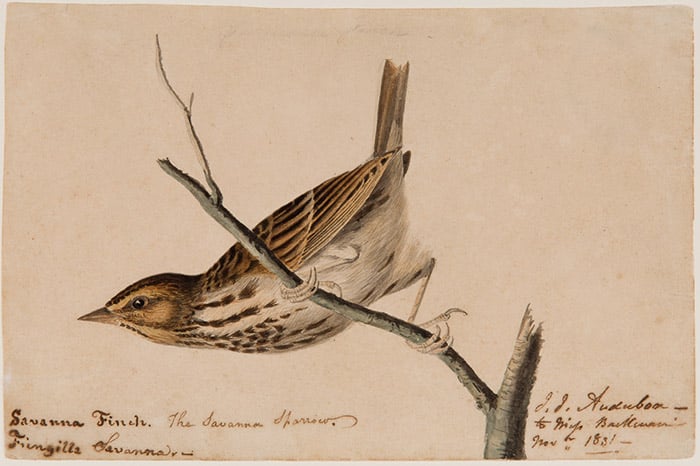
8. Elizabeth Heaphy Murray (1815-1882)
Elizabeth Heaphy Murray is considered to be the most famous watercolor female artist of her generation. She learned watercolor painting from her father, Thomas Heaphy, who was also an artist. Over Murray’s lifetime, she captured the destinations she visited next to her father or where she lived, mainly Rome, Morocco, and the Canary Islands. Murray’s style is characterized by her color choices using a palette of browns, violets, blues, blacks, reds, and golds next to olive and tan colors that granted her works a warm-toned look. Murray frequently worked outdoors but finished her works in her studio. Notably, she was recognized during her lifetime. As proof of this, she was a member of the Royal Institute of Painters in Water Colors and founded the Society of Female Artists in London.

9. Fidelia Bridges (1834-1923)
Bridges was an expert delineator of the local flora and fauna near her Connecticut summer home. In 1860, Bridges’ realistic style was highly influenced by the work of William Trost Richards, who was his painting teacher at the Pennsylvania Academy of the Fine Arts in Philadelphia. Fidelia’s extremely detailed reproductions of nature are seen in works like April in which the artist made a realistic and detailed portrayal of birds resting in blooming tree branches. Interestingly, during her lifetime, she was one of the very few women artists who could support herself with her work.

10. James McNeill Whistler (1834-1903)
Widely known for his oil paintings, starting in 1881 Whistler began to produce small marketable watercolors at a hectic pace. The artist usually worked in series revolving around one setting or topic. For example, he painted many seascapes and daily life scenes. Rendered with simplicity, the artist’s seascapes of Southend, a popular seaside destination south of London, rely on broadly balanced washes of color with sparse detail. The watercolor titled Southend Pier represents this region and hints at the presence of people and boats through scant and thick traces. On the contrary, the background is composed of translucent and fluid areas of color that give life to the sand, the sea, and the sky.

11. Winslow Homer (1836-1910)
Homer was a self-taught printmaker and landscape painter known for his marine watercolor scenes. The artist started his career working as a documentary artist during the Civil War, and after a visit to France, he was exposed to the Plein-air work of the Barbizon School of painters. This experience inspired him to develop his distinctive style characterized by the depiction of seaside scenes. For instance, he created many scenes of the fishing village of Cullercoats, England, where he stayed for almost two years, and of other locations like Florida, the Bahamas, and Cuba. The watercolor that we see here provides us with a glimpse of Homer’s expressive visual language as it perfectly captures the movement of the waves and the curiosity of a female subject who has encountered something on the beach.

12. Thomas Moran (1837-1926)
Moran is famous for his landscape watercolors, particularly those of Yellowstone National Park. The artist’s dreamy images of this park helped convince the U.S. Congress to formally designate it as a national park in 1892 and inspired tourists to visit the area. His practice was aligned with the aesthetic of the East Coast-based Hudson River painters who depicted the great outdoors of the American West. At the same time, Moran’s work exemplifies the quality of the Sublime in art, where grand natural spectacles generate a sense of terror and awe in the viewer.
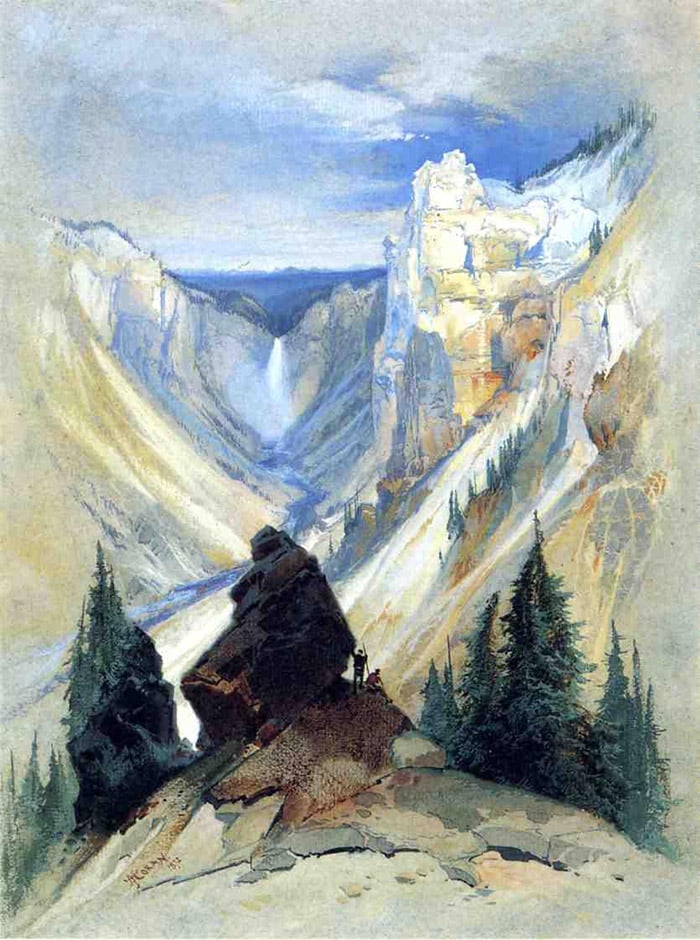
13. Paul Cézanne (1839-1906)
Watercolors had an important role in Paul Cézanne’s quest to explore the possibilities of color. Frequently, his watercolors were studied for his oil paintings. However, they also reveal his distinctive style. In this way, most of them include a limited palette of greens, blues, and some warm earth colors that give form to balanced compositions. Among the most notable examples of Cézanne’s watercolors are those of Mont Sainte-Victoire, close to Aix-en-Provence, a scene from which he also created oil paintings. The watercolor La Montagne Sainte-Victoire vue des Lauves that we see here represents this beautiful scenery with scarce yet expressive traces.

14. Berthe Morisot (1841-1895)
Known as the female-Impressionist artist, Morisot created a myriad of oil paintings of daily life scenes and landscapes. However, after she discovered Plein-air painting through Camille Corot she also produced watercolors that captured the effects of the light on her subjects and featured translucent atmospheres. Many of the artist’s small-sized watercolors were preparatory studies for her oil paintings yet they are works of art in their own right. Morisot’s approach to the medium is evidenced in Paysage, a watercolor that represents a countryside setting with only a few green and brown brushstrokes. Interestingly, some of the areas of the composition were left unpainted and the paper by itself completes the painting.

15. Vincent van Gogh (1853-1890)
Next to a myriad of oil paintings, during his lifetime Van Gogh created 150 watercolors. Anton Mauve, a cousin, introduced him to this medium which the artist used as a means to perfect his painting techniques and skills. In this way, most of them were used as field studies for their oil counterparts or to practice. However, as Van Gogh continued to refine his technique, he used more and brighter colors in his watercolors and produced more impressive works. An example of this accomplished body of work is Boats on the Beach of Saintes-Maries-de-la-Mer, where the artist used a palette of bold and colorful colors next to gestural brushstrokes to create an expressive coastal landscape.

16. Rhoda Holmes Nicholls (1854-1930)
Originally from England, Nicholls led a colorful life, traveling to South Africa, Rome, Venice, and the Dolomites. She eventually settled in the United States where she painted and taught in towns along the East Coast. Next to oil paintings and pastels, the artists painted watercolors of landscapes, floral scenes and Impressionist-looking portraits, one of which we see here. Notably, Holmes earned international recognition for her watercolors and a number of her prize-winning pieces were exhibited and reproduced throughout the late 19th and early 20th centuries. She also served as a role model for many young women of the time given she was a successful artist, art instructor, and writer.

17. John Singer Sargent (1856-1925)
Sargent is a world-famous artist celebrated for his distinctive portrait paintings. However, he also produced more than 2000 watercolors. In a similar fashion to other artists, his watercolors documented his travels to destinations ranging from the English countryside to Tyrol, Venice, Corfu, Montana, the Middle East, Florida, and Maine. Notably, Sargent considered his watercolor paintings as his “hobby” and infused them with a fluid and Impressionist style that contrasted with the more detailed approach of his oil paintings. For example, in the watercolor Boats. Venice, Sargent used long, sweeping brush strokes for the water and sky, and the colors merged with the illusion of movement. To learn more about Singer’s watercolors see our past post.

18. Maurice Prendergast (1858-1924)
Prendergast was an American artist known for his loosely brushed watercolors of landscapes and city scenes. Through prolonged stays in France, over his career, the artist had many European influences, mainly from artists like Manet or Cézanne replicating their traces and subject matter. Ultimately, the artist settled in New York City where she was acclaimed by both his peers and collectors. A vivid example of Prendergast’s style is seen in the watercolor titled Sunday Promenade, which brings to mind Manet’s composition layouts of city park scenes and his color palette.

19. Elizabeth Nourse (1859-1938)
Elizabeth Nourse was a realist-style genre portrait and landscape painter. The artist acquired a considerable reputation as a Paris’ Salon painter and was celebrated for her technical skills but also for the emotional vision she brought to her subject matter. Nourse painted watercolors of peasant themes, especially women at work, or mothers and children and she also painted portraits and still lifes, as well as landscapes of Brittany and the Rambouillet Forest. For example, in the work titled Breton Girl, we can see a working woman taking a breath of fresh air probably in between a hard day of work. This watercolor provides us with an intimate and detailed view of a daily-life scene infusing it with a romantic aura.

20. Anders Zorn (1860-1920)
Zorn is often referred to as the “Swedish Impressionist” and is famous for his use of a limited and controlled palette of colors known as the “Zorn palette.” The artist initially gained attention for his depictions of horses and human figures and his Impressionist-inspired portraits of society’s leading figures, including King Oscar II of Sweden, Theodore Roosevelt, Grover Cleveland, and William H. Taft. However, he also created watercolors with either loose brushwork or extreme detail. For example, in the watercolor titled Our Daily Bread, the artist portrayed his mother sitting at the edge of a ditch and cooking potatoes for the harvesters against an extremely realistic landscape setting.

21. Edward Hopper (1882-1967)
Edward Hopper is known for his oil paintings that represent the American lifestyle in a realist and narrative style. However, he also created many watercolors. As is the case of many other artists working with this medium, Hopper’s watercolors are more spontaneous and fluid than his oil paintings. When painting with watercolors the artist drew from visually complicated subjects, such as sea-shore lighthouses, countryside scenes, or Victorian houses, to create images specific to real locations that captured the subtle light conditions of a particular moment. The latter contrasted with his invented settings of the etchings and paintings of his urban artworks. For instance, in the work Cottages at North Truro, he loosely captured a couple of houses located next to a train line. What draws our eyes in this image is the expressivity and movement of the foliage.

Key Takeaways
- Most of the artists on this list date back to the late 18th and 19th centuries which can be explained given that prepared watercolor paints were available until 1780 and also due to the growing popularity of the medium.
- Watercolors provided the artists with a more spontaneous, immediate, expressive, and fluid approach to painting than what was obtained with oil paintings.
- The most popular watercolor artists in this list were inspired by Impressionist and Romantic artists.
- During the 19th century, watercolor flourished as a reputed medium in its own right and was no longer considered as a means for creating oil paintings.
- Due to the stereotypes surrounding women artists and the many restrictions they faced, mostly male watercolor artists obtained international fame. This does not mean women artists didn’t produce groundbreaking watercolors; it only reflects Art History’s social biases.
Thanks for Reading!
Thanks for taking the time to read this post. I appreciate it! Feel free to share with friends. If you want more painting tips, check out my Painting Academy course.
Happy painting!

Dan Scott
Draw Paint Academy

